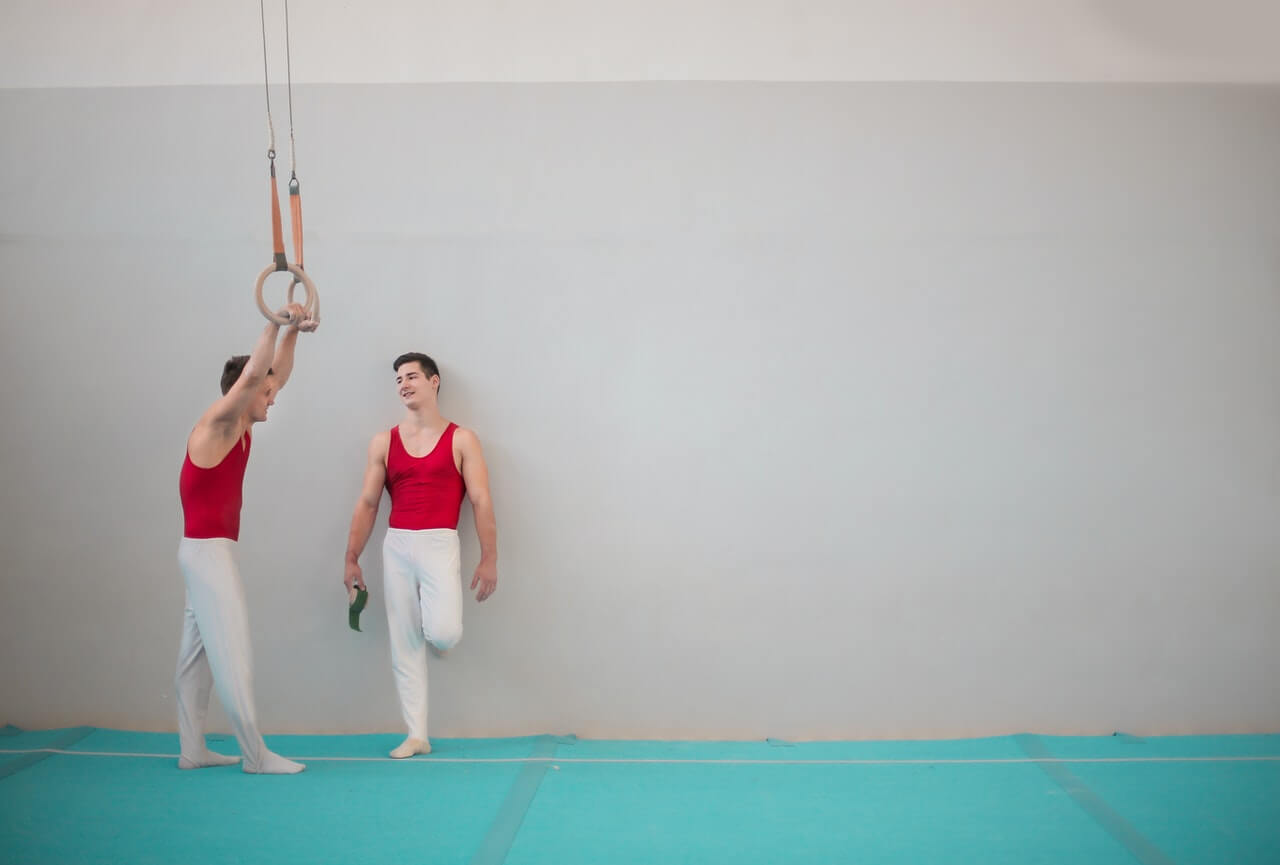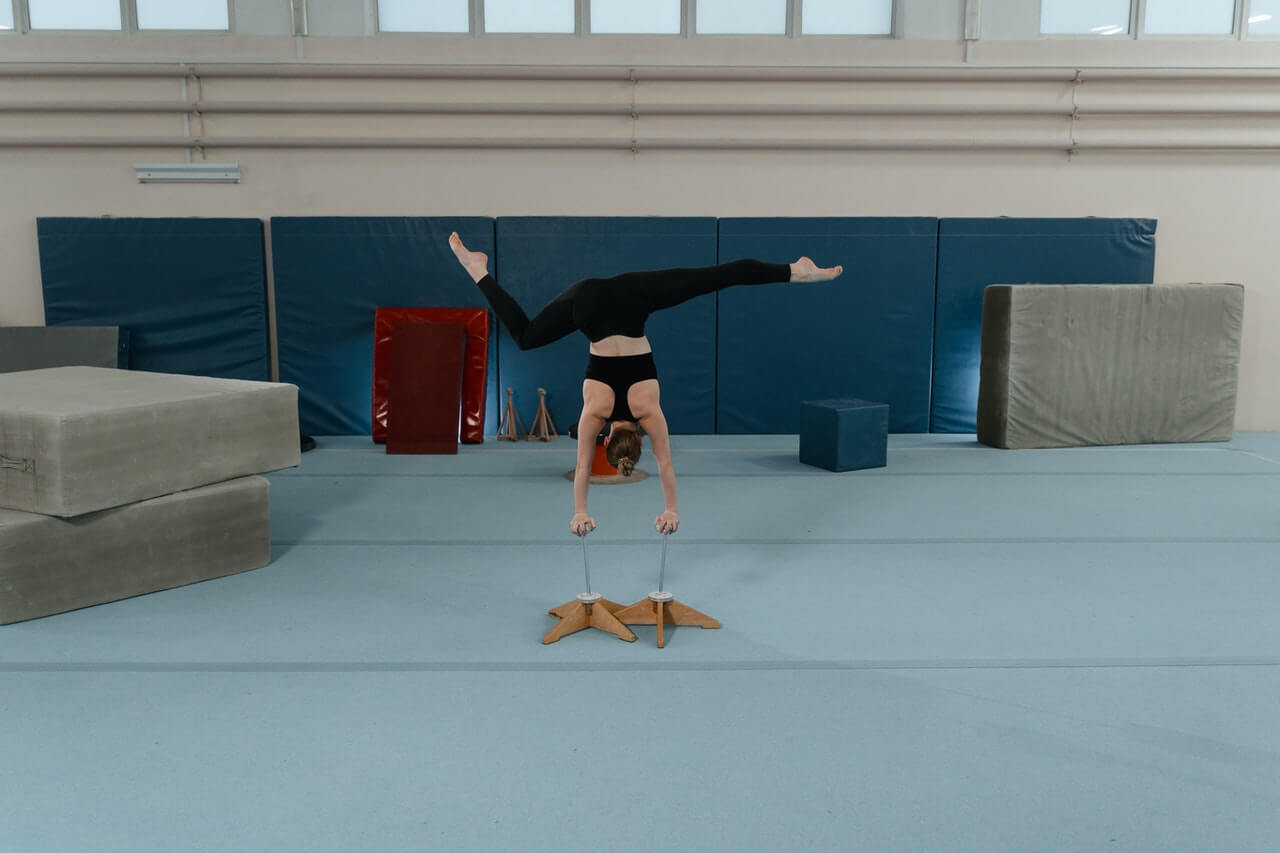Are you interested in learning how to start a gymnastics club but you don’t know where to begin? We’ve got you covered. From competitor research to brand intentions, this article will share how to plan, launch and set yourself up for sustainable success.
Below, we detail how to start a gymnastics business in your local area in 7 steps.
Let’s get started.
1) Study your market and assess your opportunity
When researching how to start a gymnastics club in your area, you have to do a deep dive on the competition. Why? Because your competition will be a key indicator for your gym’s potential.

First, start by compiling a list of gymnastics clubs in your area. If there are a lot of gyms it suggests there is a well-established market for your services. However, it also means that it may take more work to establish your business in the market.
After you compile your list of competing gyms, find out how big their enrollment is and what classes they offer. This information can help you determine what classes you offer and how you brand your gym.
Analyze your existing competitors to find opportunities. For instance, if you find that your competition is primarily focused on competitive gymnastics, you can build your club offerings around recreational classes.
Furthermore, you could brand your gym to reflect a more light-hearted and fun atmosphere in contrast to serious competitive brands. Differentiating yourself in this way will help you stand out from the competition.
Another option for your new gym might be to capitalize on age groups that aren’t being served by your competitors.
For example, new parents are always looking for programs that will get them active with young babies and toddlers.
If you see that your competitors start their class offerings at three or four years old, your best way into the market may be in offering special parent and tots classes for babies and toddlers ages 9 – 18 months old and 18 – 36 months old.
By providing quality programming and meaningful interactions for these young families, you can form a strong and lasting bond that will keep them returning to your club for years to come.
2) How to start a gymnastics club with a small team
Your team is likely to be small when you’re starting out. That’s okay. Small teams can accomplish a lot but they have to be well-rounded.
Take time to evaluate the strengths, weaknesses and overall skills of your team members. This can include both self-evaluations and anonymous evaluations from other team members. Once your evaluations are complete, compare and contrast the data.

Are there any skills your team is missing? Or, are there particular weaknesses you’d like to address?
Determine whether any missing skills can be taught with staff training, or whether you need to hire someone with a special skill-set.
For example, if your team has a lot of competitive experience, you may need to hire someone to specialize in kindergym and parent and tot classes.
By building a well-rounded team, it’ll be easier to meet the needs of your membership as your business grows.
3) Create your brand with clear intentions
Once you complete your competitor and team research, you have to be clear about who you want to serve.
If you determine that your gym will break into the market by specializing in parent and tot classes, you need ensure your name, brand, coaches and equipment can all attract and support that market.
Of course, this doesn’t mean that you have to only offer one type of class. Nor does it mean that you have to specialize in this type of instruction forever.
Instead, it simply means that all of the different aspects of your business must be flexible enough to attract and support your target market today.
How to start a gymnastics club with a strategic name
When coming up with your gymnastics club name ideas, consider how people will find your business. Chances are, they’ll find it by using a search engine like Google.
If your business is listed near the top of Google when someone searches for gymnastics clubs in your area, you’ll be much more likely to passively attract new customers and grow.
There are several things you can do to help improve your rank on search engines, but one of the easiest is to choose a strategic name.
A strategic gymnastics club name will include your local town, city or county name. By doing this, you’ll be sending a clear signal to search engines about where you are located and what your business offers.

For example, if you name your club “Townsville Gymnastics Club” or “[Your Last Name]’s Gymnastics Club in Townsville”, your website and anyone who links to it using your business name, will automatically include the keywords “Townsville” and “Gymnastics Club.”
These keywords tell search engines that your site is a good source of information for people looking for a “Gymnastics Club” in “Townsville.” As a result, search engines like Google will be more likely to recommend your site when someone completes that search.
Of course, if you have dreams of running a competitive program in the future, ensure that your name and brand will also appeal to competitive gymnasts. For example, consider avoiding names like “Townsville Gymnastics Club for Toddlers” if your end goal is to serve competitive gymnasts.
You can always move into a new space and hire competitive coaches, but renaming and rebranding your club can disrupt your marketing, advertising and search engine rankings. So, be clear on who you’re serving today and who you want to serve tomorrow.
4) Understand your financial picture
Create a detailed financial plan for your club. Start by researching how much it costs to rent or purchase space in your local area.
Good gym space requires high ceilings, a good runway for tumbling or vault, and minimal posts or columns impeding the floor space (any posts or columns in your space will need to be thoroughly wrapped in padding).
Remember: you can always get a larger space as you grow, so don’t be concerned if you need to start smaller.
In addition to renting or purchasing space, you’ll also want to get a clearer picture about costs for:
- Equipment (Vault, Beam, Trampoline, Rings, Bars, Floor Mats, Crash Pads, etc.)
- Tech Devices (Front desk computers, tablets, etc.)
- Furniture and fixtures (Parent seating, hooks and storage for jackets and backpacks, office chairs, desks, tables, etc.)
- Utilities (Heat, Hydro, Water)
- Insurance (Liability insurance, building insurance, all other applicable insurance policies)
- Registration and Class Management Software (For managing registration, waitlists, class schedules, evaluations, etc.)
What are Your Financing Options?
Once you understand your financials, look into your financing options.
Will you be financing privately? Will you seek out financing from close family and friends? Is there an angel investor that wants to finance your club? Can you get a bank loan?
Give yourself a clear idea about what sort of monthly, seasonal, or yearly revenue you will need to pay back your financing and grow into your desired space.
Take into account expenses for ideal instructor-to-student ratios in addition to everything listed above.
Of course, this plan will not be completely accurate from the start. However, the exercise of mapping out your financial picture will help you anticipate hurdles and strategize solutions. Plus, this plan is something you can revisit and update after each season.
5) Get legal guidance and liability coverage
Getting proper legal advice is vital for starting any business. To get an idea of what you may need, be sure to do some research on liability coverage and legal guidance in your region, state or province.
Get in touch with your prospective gymnastics governing body.
For example, in Ontario Gymnastics Ontario offers liability insurance for their member clubs. Does your prospective governing body offer the same?

Understanding the liability insurance available for your club can help guide your lawyer in providing the best advice for your gym.
You may also want to look into things like intellectual property protections for your brand, creating non-compete clauses for coaches and staff, and building insurance.
Of course, these are just some of the legal considerations you’ll have to make. For a full understanding of what your new gym needs, always be sure to discuss your options with a lawyer.
6) Make registration and club management easy
When researching how to start a gymnastics club, you need to look into gymnastics software. Specifically, you should seek out software that automates registration and club management tasks. When these tasks are automated they become easy and your club will enjoy major time-savings.
Using gymnastics software is like having an extra employee but at a tiny fraction of the cost.
Automated features like real-time class availability can expedite purchasing decisions and help fill your classes faster. Plus, a feature like automated waitlists can immediately reach out to interested families whenever new class spots come available. In this way, your club can automatically make sales without anyone on your team having to lift a finger.
Of course, you also want to make sure your software will scale with your growth. That’s why providers like Uplifter include a suite of growth tools and offer an unlimited contacts database for your members, so you don’t incur extra charges when your membership grows.
Lastly, steer clear of gymnastics software providers that require you to sign a long-term contract.
There’s no reason for a software provider to lock your club into a contract. If anything, it could be a sign that they’re not confident in their software.
Instead, look for a confident software provider that doesn’t require contracts. These providers continue to grow based on the quality of their software, not their contracts. When a software provider has exceptional customer service and innovates to meet the needs of tomorrow, they don’t need long-term contracts to grow.
7) Take Advantage of 3 Easy Marketing Wins
Every business needs to learn how to reach a wider audience. But marketing doesn’t have to be rocket science.
We’ve already detailed 11 marketing ideas and 5 key advertising measurements for gymnastics clubs. But below, we’ll focus on three very simple things you can do to boost your marketing efforts from the start.

Invest more time into SEO
Create a Google My Business profile. As we mention in our 11 marketing ideas for gymnastics clubs (link above), creating this profile will give your business the potential to visually dominate search engine rankings.
It also allows you to prominently display your phone number, website, hours of operation and links to your location on Google Maps so that people can easily find you.
The best part is that it’s a free service from Google, so there’s no reason not to create a listing.
Another potentially free service you can take advantage of is a website builder and free hosting from your gymnastics software provider. At Uplifter, hundreds of clubs create SEO friendly websites using our website builder that comes free with our software.
Thanks to the free hosting we provide, we’ve had numerous clubs tell us that our entire software suite costs less than their previous website and hosting package alone. As a result, they’re saving money on their website and hosting, plus getting a full suite of registration and class management tools to grow their club.
Wherever you get your website, make sure you can edit your meta data to further improve your search engine rankings.
Gain social media visibility without posting
Creating a social media strategy and scheduling social media posts can take up a lot of valuable time. And when you start your gymnastics club with a small team, you don’t have time to spare.
But, as we’ve talked about in our TikTok article, managing your business’ social media doesn’t have to be difficult.
Consider setting aside some time at the end of class for gymnasts to create content that they want to share on social media. This can be as simple as allowing them to take a picture with friends, or having someone film them performing a skill they’re proud of. (Of course, coaches and spotters need to be involved whenever necessary.)
When these gymnasts share their post, just ask them to tag your business or location. Once they do this, others will be able to see where they’ve learned their skills. It’s an easy and passive way for your club to expand your reach.

If this strategy begins to take up too much class time, just put a cap on the number of posts allowed for each class. Then, make sure each gymnast gets a turn from week to week.
Open your business to a wider audience
One of the best things you can do to grow your club’s reach is offer monthly subscription or installment payments. Again, this should come as a built-in feature with your club software provider.
When you allow customers to split up a single lump sum payment into smaller, more manageable payments, two very powerful things can happen.
The first is that your club can generate smoother, more predictable cashflow. Rather than receiving all your class payments at the beginning of the season and trying to forecast your needs months ahead of time, your club can easily fulfill needs as they come.
The second powerful thing that can happen is that you instantly attract a wider audience.
Instead of only catering to families that have lump sum payments on-hand, you can now serve families with more modest budgets that prefer small, monthly payments.
By reaching a wider audience in this way, you’ll be much more likely to hit your business growth targets.
Summary: Research Helps Eliminate Surprises
When learning how to start a gymnastics club, aim to eliminate surprises. Anyone who has started a business will say that there are always surprises that can throw a wrench in your plans. But, the more research you complete, the more surprises you can eliminate.
At Uplifter we’re very proud to be the official club software provider for Gymnastics Ontario, Gymnastics BC, Alberta Gymnastics Federation, and many more. As a result, we’ve been able to help hundreds of club owners save time and money streamlining operations for their clubs.
If you still have questions about how to start a gymnastics club, feel free to contact us, we’re always happy to help!







